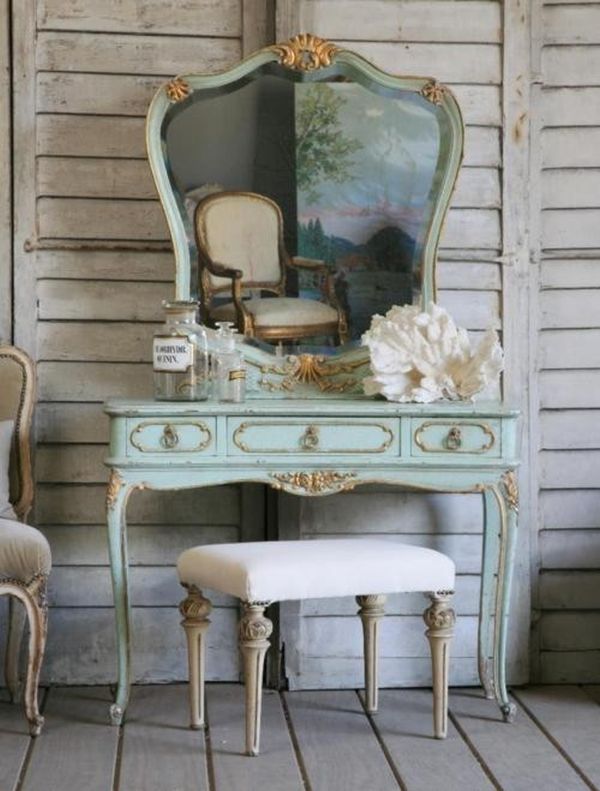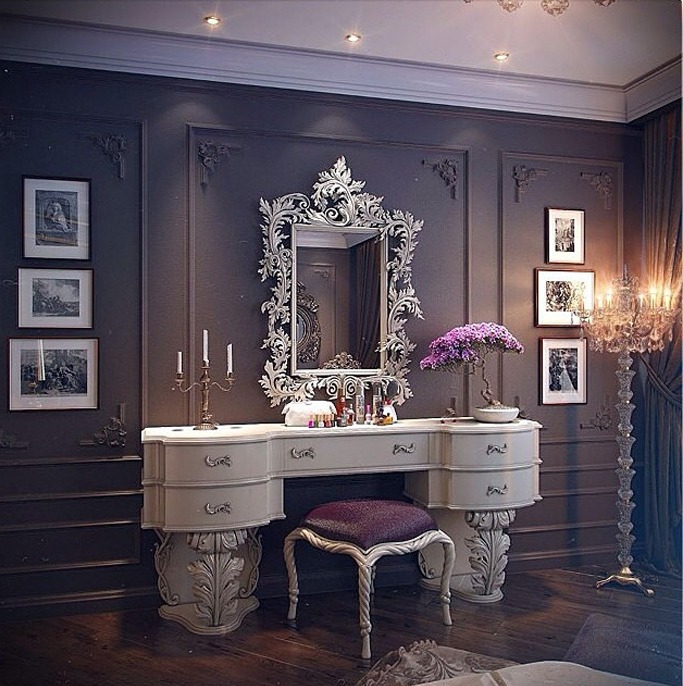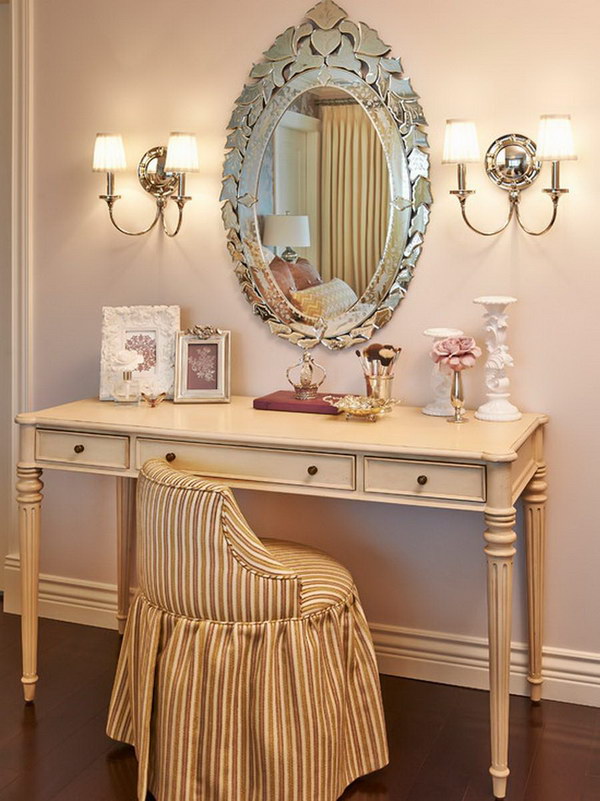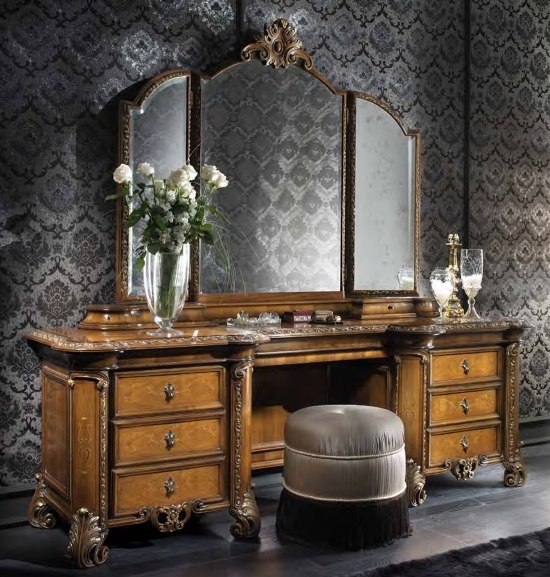A Glimpse into Victorian Elegance: Exploring the Vanity Makeup Table
Related Articles: A Glimpse into Victorian Elegance: Exploring the Vanity Makeup Table
Introduction
In this auspicious occasion, we are delighted to delve into the intriguing topic related to A Glimpse into Victorian Elegance: Exploring the Vanity Makeup Table. Let’s weave interesting information and offer fresh perspectives to the readers.
Table of Content
A Glimpse into Victorian Elegance: Exploring the Vanity Makeup Table

The Victorian era, spanning from 1837 to 1901, was a period marked by significant social, cultural, and technological advancements. This era also witnessed a burgeoning interest in personal adornment and beauty, which manifested in the widespread use of elaborate dressing tables, commonly known as vanity makeup tables. These pieces of furniture, often crafted with exquisite detail and materials, served as more than just practical surfaces for applying cosmetics; they represented a symbol of refinement, status, and the burgeoning feminine identity of the time.
The Rise of the Vanity Makeup Table: A Reflection of Victorian Values
The Victorian era saw a shift in societal expectations surrounding women’s roles and appearances. Women were increasingly encouraged to cultivate a refined and elegant persona, emphasizing their beauty and grace. The vanity makeup table, with its intricate carvings, gleaming surfaces, and often-integrated mirrors, became a central element in this pursuit of feminine perfection.
Beyond mere practicality, these tables served as a stage for the elaborate beauty rituals of the time. The act of applying makeup was not merely a routine but a carefully choreographed performance, reflecting the societal pressures placed upon women to maintain a certain standard of beauty.
Beyond the Surface: Exploring the Design and Function of Victorian Vanity Makeup Tables
Victorian vanity makeup tables were often characterized by their ornate designs, drawing inspiration from various stylistic influences. These included:
- Gothic Revival: Characterized by pointed arches, intricate carvings, and dark, rich woods like mahogany and walnut.
- Rococo Revival: Emphasized delicate curves, floral motifs, and lighter woods like cherry and maple.
- Eastlake Style: Favored simpler lines, geometric patterns, and a focus on functionality.
The materials used in crafting these tables were often luxurious, reflecting the wealth and status of their owners. Polished woods, inlaid ivory, and ornate brass accents were common features. The presence of a mirror, often framed in elaborate carvings, was essential, allowing for a clear view of the face during the application of cosmetics.
The design and features of these tables were not merely decorative; they were carefully considered to enhance the functionality of the table. Drawers, often concealed behind intricate carvings, provided storage for cosmetics, brushes, and other beauty essentials. Some tables even featured built-in compartments for jewelry or other personal items.
The Significance of the Vanity Makeup Table in Victorian Society
The Victorian vanity makeup table held a significant place in the lives of women of the era. It served as a private sanctuary, a space for personal reflection and grooming. It also served as a symbol of status, with the opulence of the table reflecting the wealth and social standing of its owner.
Furthermore, the vanity makeup table played a crucial role in shaping the image of Victorian femininity. The elaborate rituals of applying makeup and dressing, performed in front of the mirror, reinforced the importance of beauty and refinement in Victorian society.
Exploring the Evolution of the Vanity Makeup Table: From Victorian Elegance to Modern Aesthetics
While the Victorian era saw the rise of the vanity makeup table as a symbol of feminine grace and refinement, the design and functionality of these tables have evolved over time. Modern vanity makeup tables, while still embodying the spirit of self-care and personal style, often incorporate contemporary materials and design elements.
However, the core purpose of the vanity makeup table remains unchanged: to provide a dedicated space for personal grooming and self-expression. Whether it is the intricate carvings of a Victorian antique or the sleek minimalism of a modern design, the vanity makeup table continues to serve as a powerful symbol of individuality and self-care.
Frequently Asked Questions (FAQs) about Victorian Vanity Makeup Tables
Q: What are the most common materials used in Victorian vanity makeup tables?
A: Victorian vanity makeup tables were often crafted from high-quality materials, reflecting the wealth and status of their owners. Common materials included:
- Woods: Mahogany, walnut, cherry, maple, and rosewood were frequently used for their durability and aesthetic appeal.
- Metals: Brass, bronze, and silver were often used for accents, hardware, and embellishments.
- Ivory: Inlaid ivory was a common feature on more elaborate tables, adding a touch of luxury and sophistication.
Q: What are the defining characteristics of a Victorian vanity makeup table?
A: Victorian vanity makeup tables were characterized by their ornate designs, often drawing inspiration from various stylistic influences. Key features included:
- Intricate Carvings: Elaborate carvings, often depicting floral motifs, geometric patterns, or mythical creatures, were a hallmark of Victorian design.
- Ornate Hardware: Brass or silver handles, hinges, and keyhole plates added a touch of elegance and refinement.
- Inlaid Details: Ivory, mother-of-pearl, or other precious materials were often used for inlay work, creating intricate patterns and adding a luxurious touch.
- Mirror: A mirror, often framed in elaborate carvings, was an essential feature, allowing for a clear view of the face during the application of cosmetics.
- Drawers and Storage: Drawers, often concealed behind intricate carvings, provided storage for cosmetics, brushes, and other beauty essentials.
Q: How can I tell if a vanity makeup table is truly Victorian?
A: Determining the authenticity of a Victorian vanity makeup table requires careful examination and consideration of several factors:
- Style and Design: The table’s design should reflect the stylistic trends of the Victorian era, such as Gothic Revival, Rococo Revival, or Eastlake Style.
- Materials and Construction: The materials used and the methods of construction should be consistent with Victorian practices.
- Hardware and Accents: The hardware and accents should be typical of the Victorian era, such as brass or silver handles, hinges, and keyhole plates.
- Provenance: The table’s history and origin can provide valuable clues about its authenticity.
Q: What are the benefits of owning a Victorian vanity makeup table?
A: Owning a Victorian vanity makeup table offers several benefits:
- Historical Significance: These tables are a tangible link to the past, offering a glimpse into the lives and values of the Victorian era.
- Aesthetic Appeal: The ornate designs and luxurious materials of Victorian vanity makeup tables add a touch of elegance and refinement to any space.
- Functional Value: These tables provide a dedicated space for personal grooming and self-care, offering ample storage for cosmetics and beauty essentials.
- Investment Potential: Authentic Victorian vanity makeup tables are highly sought after by collectors and can appreciate in value over time.
Tips for Maintaining a Victorian Vanity Makeup Table
- Regular Cleaning: Dust and polish the table regularly to maintain its shine and protect the finish. Use a soft, lint-free cloth and a wood polish specifically designed for antique furniture.
- Avoid Harsh Chemicals: Avoid using harsh cleaners or abrasives, as these can damage the finish and the intricate carvings.
- Protect from Sunlight: Prolonged exposure to direct sunlight can fade the finish and damage the materials. Use curtains or blinds to protect the table from excessive sunlight.
- Handle with Care: Handle the table with care, avoiding any sudden movements or bumps that could damage the delicate carvings or hardware.
- Professional Restoration: If the table requires significant repairs or restoration, consult a professional conservator or antique furniture restorer.
Conclusion: Preserving Victorian Elegance and Functionality
The Victorian vanity makeup table, with its intricate designs and luxurious materials, stands as a testament to the era’s fascination with beauty, refinement, and self-expression. These tables continue to hold a special place in the hearts of collectors and enthusiasts, offering a glimpse into a bygone era and a reminder of the enduring power of craftsmanship and artistry.
While the Victorian era has long passed, the spirit of self-care and personal style embodied by the vanity makeup table remains timeless. Whether it is the ornate carvings of a Victorian antique or the sleek minimalism of a modern design, the vanity makeup table continues to serve as a powerful symbol of individuality and self-expression.








Closure
Thus, we hope this article has provided valuable insights into A Glimpse into Victorian Elegance: Exploring the Vanity Makeup Table. We appreciate your attention to our article. See you in our next article!